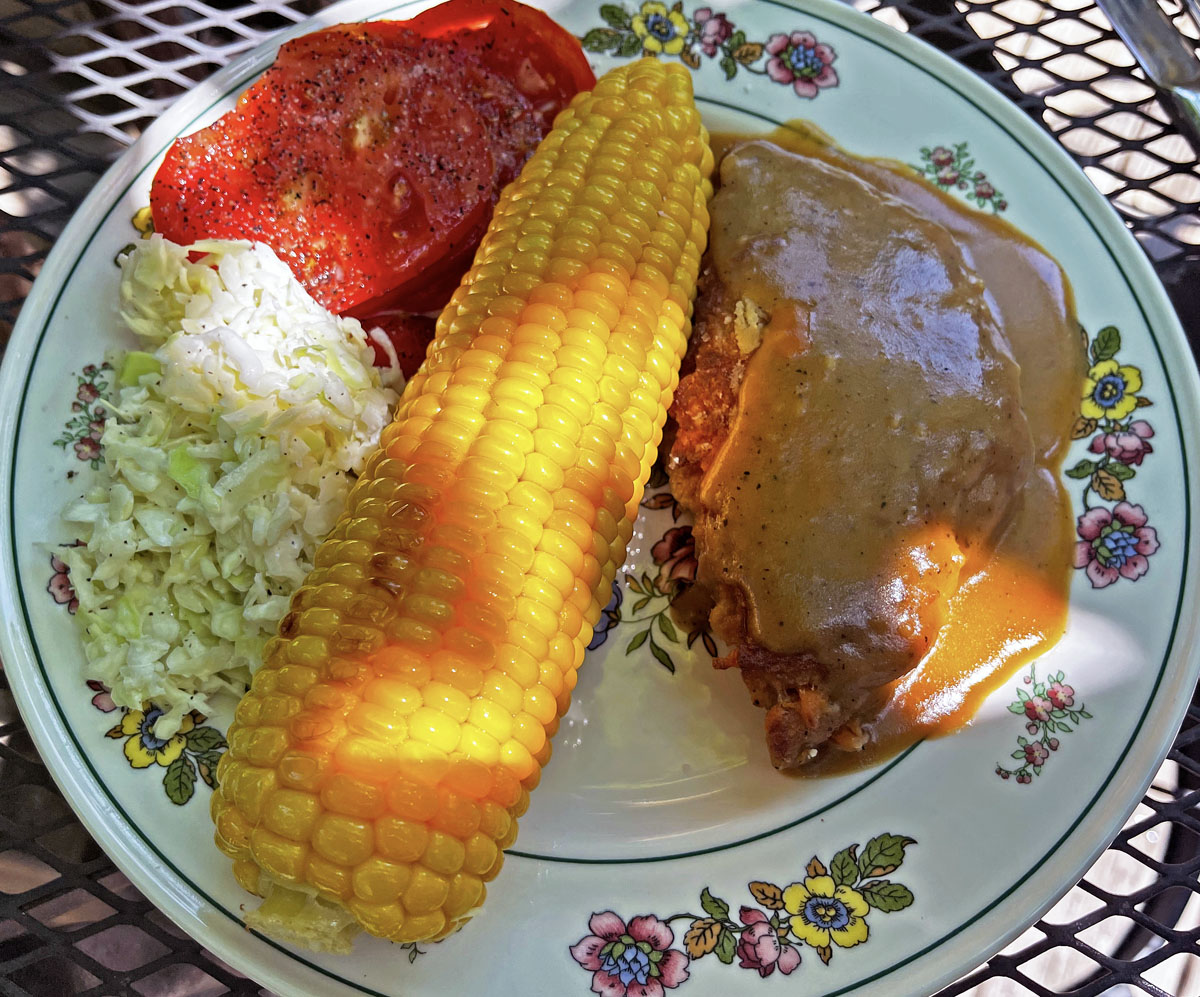
Country-style steak made from seitan
I have bought seitan in the past (it’s very expensive), and I didn’t really like it. Homemade seitan is a whole ′nother thing. The key ingredient is gluten flour. Gluten alone would be impossibly rubbery, so a certain amount of ground legumes (I used garbanzo beans in the seitan in the photo) is needed to optimize the “bite” of the seitan. And because gluten and legumes alone wouldn’t have much flavor, sauce and seasoning are very important.
I feel sorry for those who can’t tolerate gluten (most people can) or who avoid gluten for some reason. My suspicion is that gluten takes the rap for the downsides of white flour. And, in my view, even white flour has its essential uses, in moderation. Personally, I love gluten, and I have no reason to suspect that gluten has done me or my digestive system any harm. Quite the opposite, I would testify. Gluten is a good source of vegetarian protein.
Anyway, here is a good basic recipe for seitan. That recipe uses 3 parts gluten to 2 parts legume. That’s too much gluten, in my opinion. Even 1 to 1 seems a little high on gluten, so you should experiment with the proportions. The recipe in the link uses lentils. I usually use cooked chickpeas. But any legume would work. Varying the type of legume would vary the spin of the seitan. If you want something more chickeny, use chickpeas. For something more beefy, use blackbeans. Recipes differ on how to cook the seitan. I shape the dough and simmer the seitan in stock. That seems simplest, plus the seitan absorbs flavor from the stock.
I welcome the trend toward fake meats. However, after my initial enthusiasm, I find that I’m not all that interested in fake meats. For one, they’re just too meaty. I prefer vegetarian alternatives that are high in protein but that don’t pretend to be anything other than what they are. Though, according to Wikipedia, the word “seitan” is new, wheat gluten has been eaten in Asia for hundreds of years. The Chinese word translates to “dough tendon,” which is a fine description of the texture of gluten unless you cut the gluten with something that isn’t so rubbery.
Is gluten a processed food? I would argue that it is not. Even old water-powered mills could produce flour from the germ of the wheat. They called it “shorts” flour and sold it as food for pigs. Separating the germ from the bran from the white endosperm after milling was just a matter of sifting, as far as I know.
Seitan is very absorbent, so it loves sauces and gravies. For Asian dishes, I’d suggest cutting it into thin strips (and giving the seitan a quick stir-fry) as though you were making beef and broccoli. Seitan steaks, with dark gravy, naturally, lie at the Western end of the seitan spectrum. I rolled the seitan steak in seasoned flour and lightly fried it, the better to simulate country-style steak.
Seitan is high in protein and low in carbs. It’s also low in fiber, so I think it’s a good idea to serve it with high-fiber foods. I kneaded grated carrots and chopped onions into the seitan in the photo, not only to increase the fiber but also to improve the bite.

Besides the corn, slaw and tomatoes, the sauce looking item looks like Salisbury steak
I stumbled across your blog last week and am enjoying going through the archives. This post made me chuckle, recalling a time many years ago when my vegan cousin and her husband brought a seitan dish to Thanksgiving. I had no interest in it, but to be nice, I tried some. I didn’t like it, but didn’t say anything. I smiled, however, when I heard them talking about how they didn’t like it either.